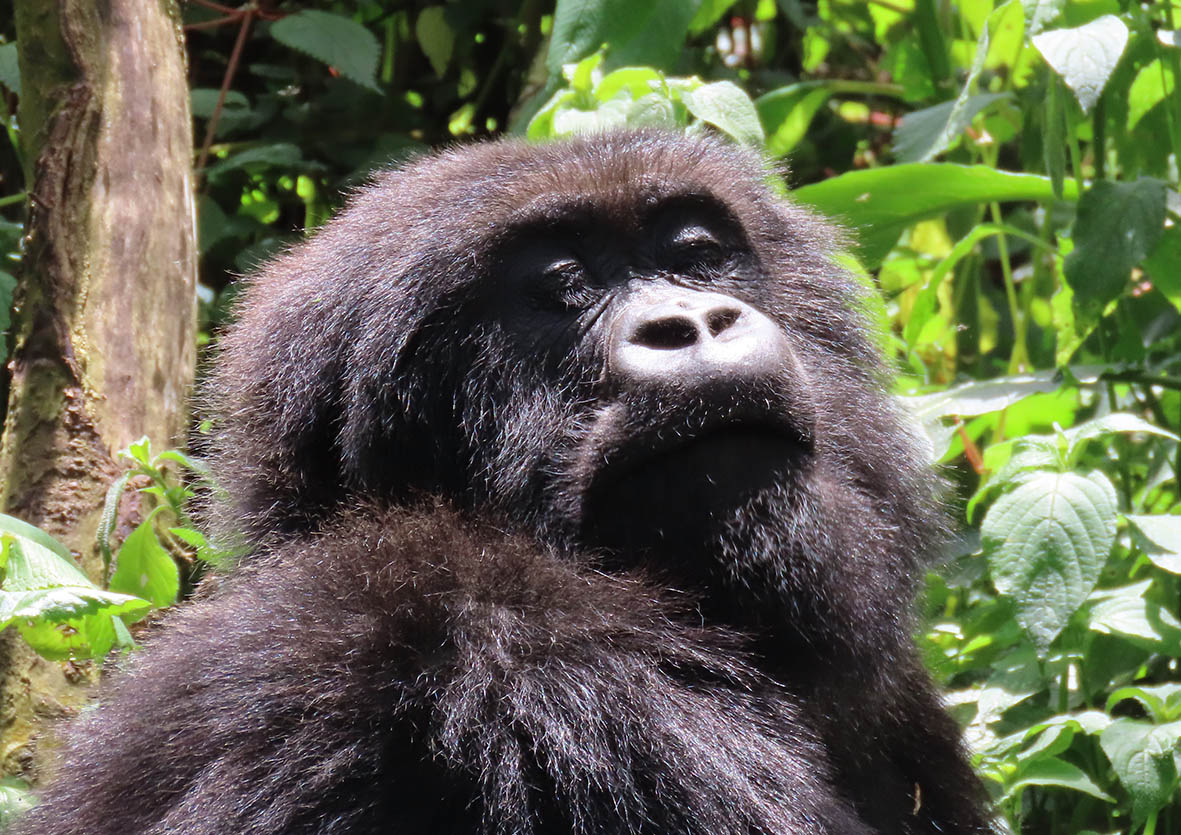Sue Searle, our founder and Principal Ecologist recently visited Rwanda. Here is her account of her encounter with the mountain gorillas that live there.
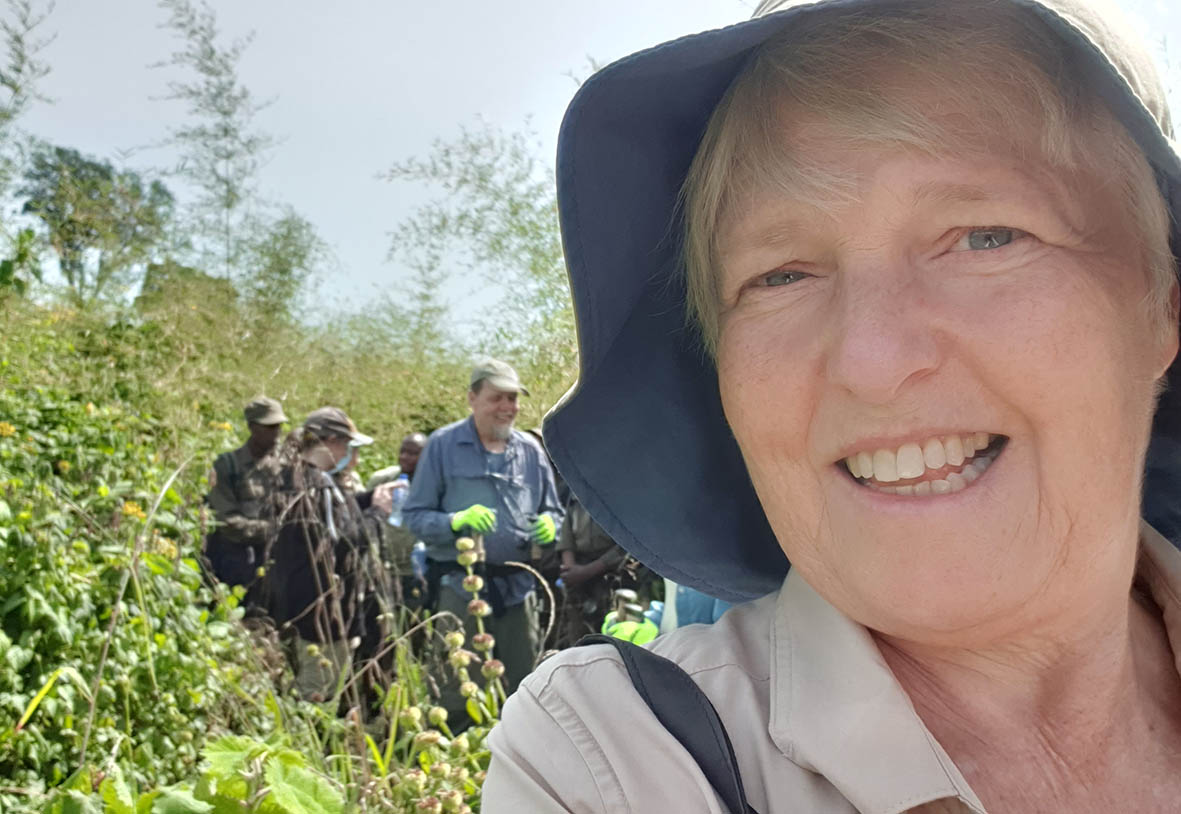
As I made my way through the dense stand of bamboo and giant stinging nettles, my heart was pounding with excitement and anticipation – I had waited all my life to see a mountain gorilla in the wild.
As we approached the gorilla family’s territory, the guide signalled for us to stop and remain silent. We waited patiently for what seemed like an eternity, scanning the vegetation for any sign of movement.
Then, suddenly, I caught a glimpse of a massive black shape moving through the vegetation. My heart leapt as I realized it was a mountain gorilla. I could hardly believe my eyes as the magnificent creature emerged from the dense undergrowth and stood before me, briefly looking straight into my eyes.
It was a huge male gorilla, with a thick, shaggy coat of black hair and silver fur on his back. He was immense, with a muscular build, easily weighing over 200kg (I only weigh 62kg!), yet he moved with a surprising grace and agility.

For a moment, I simply stood there, awestruck and speechless, taking in the incredible sight before me. The gorilla was checking us out. Friend or foe? The guides made deep comforting gorilla sounds to reassure him we were friends. After a short while he sat down and started eating leaves and grooming himself as if we weren’t even there. He then let out a long and loud fart which made us all giggle!
As I watched him, I felt a sense of deep reverence and respect for this magnificent creature and all the conservation efforts that have made it possible to still see them in the wild. I felt it was a great privilege to be there and witness this first hand.
Soon we were joined by several of his family, females, youngsters and blackbacks (males under 12 years old). The silverback was gentle and patient with the youngsters who clambered over him. The mothers with babies were equally patient with their youngsters.
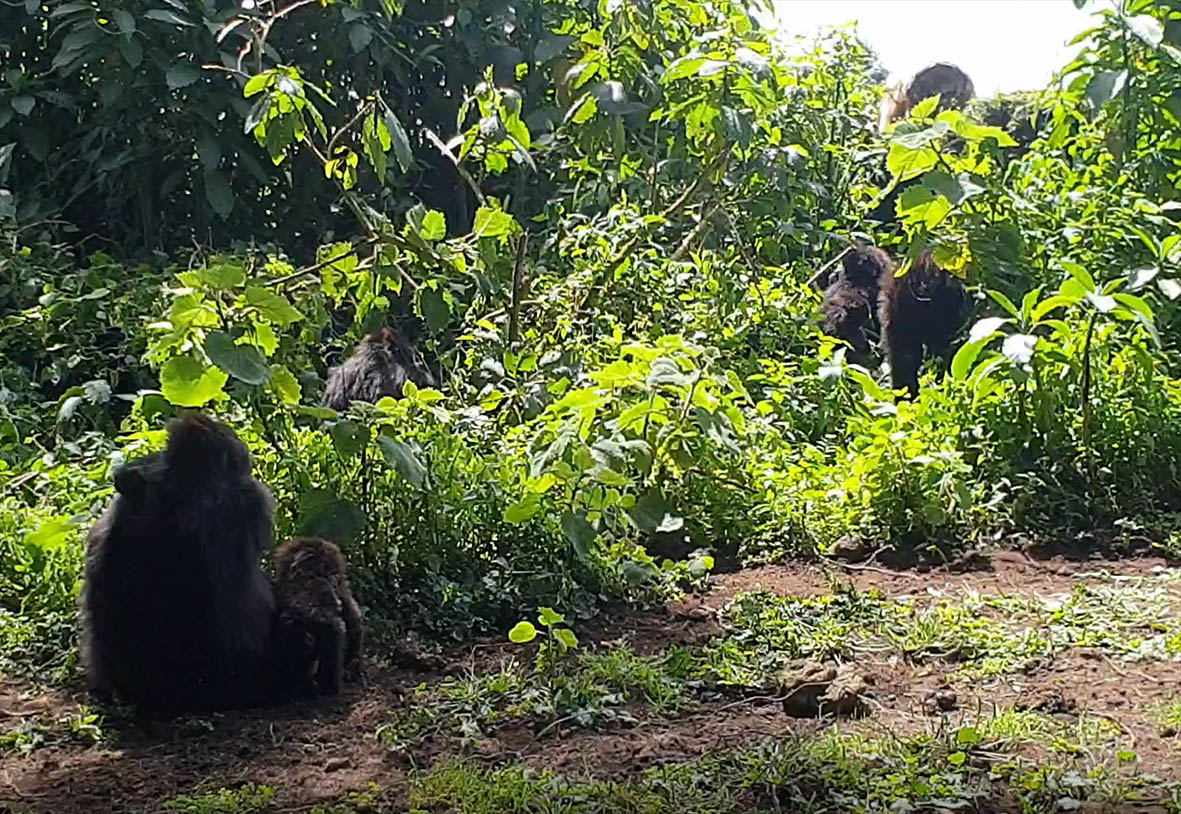
My overall feeling was that these magnificent creatures were very much like us. Their hand and facial features almost the same, their feet were slightly different with the big toe to one side to allow grip when climbing trees. They were very family orientated and the youngsters got up to antics by rolling around, playing with their siblings, climbing up the bamboo and pestering the adults. They are peaceful, gentle creatures that deserve our care and respect.
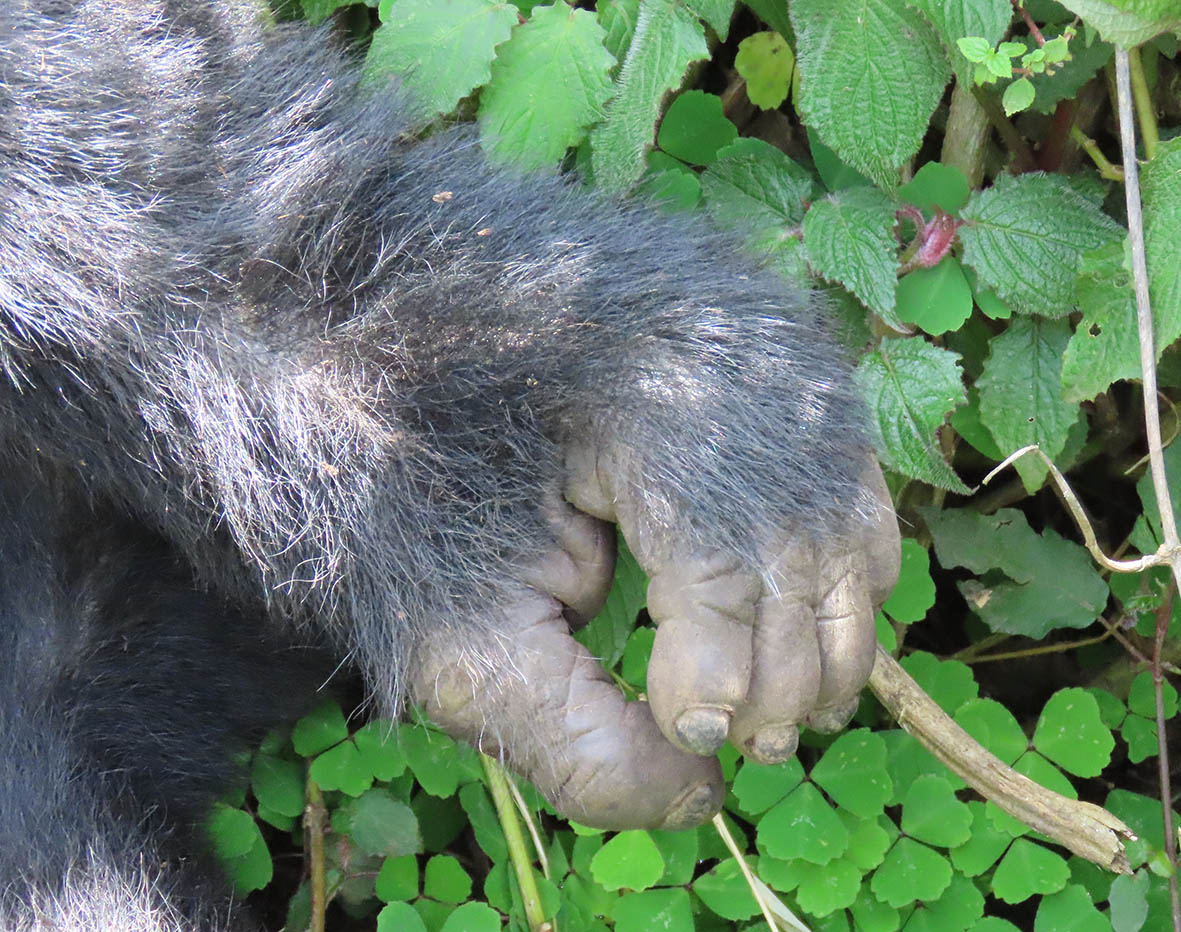
We were only allowed an hour with them and we were able to witness different behaviours and interactions in the group and get to know them.
The Virunga Massif
The Virunga Massif is a range of dormant volcanoes located in the border region of Uganda, Rwanda, and the Democratic Republic of Congo. The area is renowned for its stunning natural beauty, diverse wildlife, and most notably, as the habitat of the critically endangered mountain gorilla. The Rwandan part of the Massif is called the Volcanoes National Park.
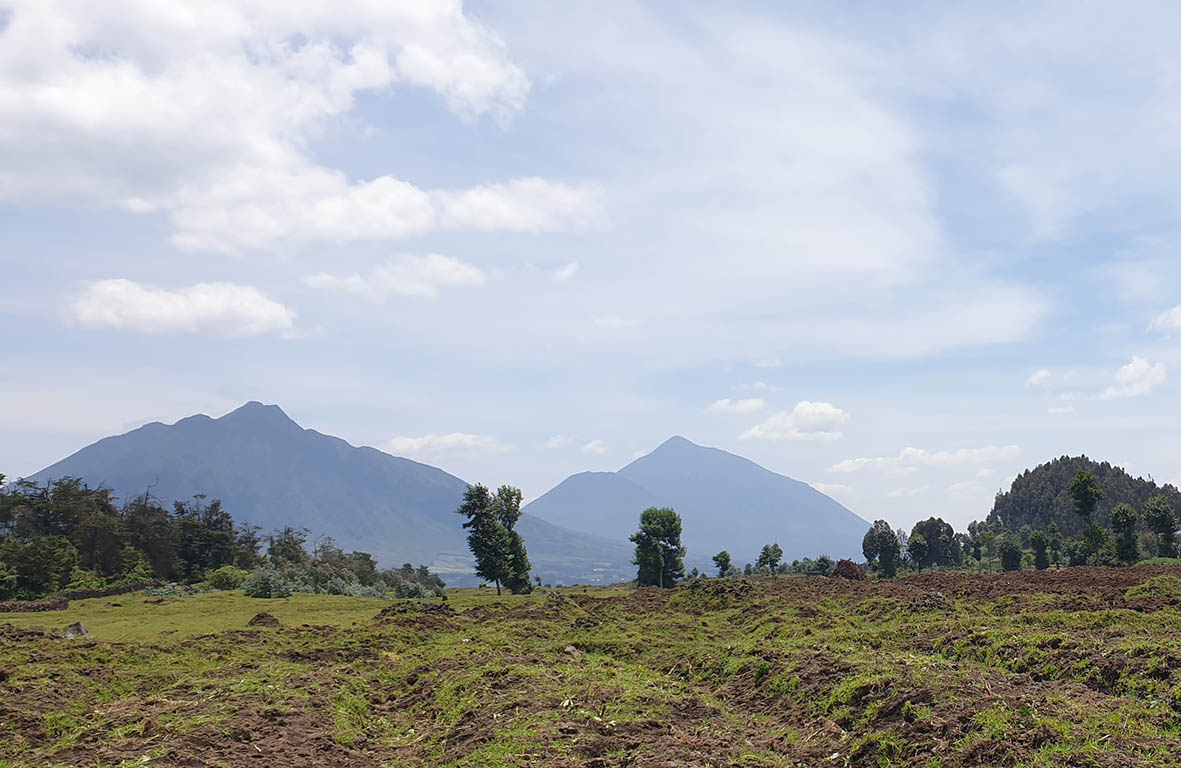
The mountain gorilla’s habitat is located in the dense forests that blanket the slopes of the Virunga Massif. These forests are lush and humid, with a wide variety of vegetation types, including bamboo, giant lobelia, and heather. The gorillas primarily inhabit the montane forest, which is characterized by its dense canopy, understory of shrubs and herbs, and a rich array of epiphytes and lianas. It is cold at night and they have grown thicker hair than other gorilla species to cope with this.
The mountain gorilla’s habitat is also home to a variety of other species, including several rare and endangered animals such as the golden monkey and the okapi. Numerous bird species, reptiles, amphibians, and insects also live in the forest, making it one of the most biologically diverse regions on the planet.

However, the mountain gorilla’s habitat is under constant threat from human encroachment, deforestation, and illegal poaching. Conservation efforts, such as national park designation and strict protection laws, have helped to stabilize the gorilla population, but the species remains critically endangered, with only an estimated 1,000 individuals remaining in the wild.
The legacy of Dian Fossey
Dian Fossey was an American primatologist who devoted her life to the study and conservation of mountain gorillas in the Virunga Massif of Rwanda. Her pioneering research and activism helped to raise awareness about the plight of the gorillas and played a crucial role in their protection and survival.
Fossey arrived in Rwanda in 1967 aged 35 and began studying the mountain gorillas, which were then facing the threat of extinction due to poaching and habitat destruction. Over the next two decades, she conducted ground-breaking research on the gorillas’ behaviour, social structure, and ecology, becoming one of the world’s leading experts on the species.
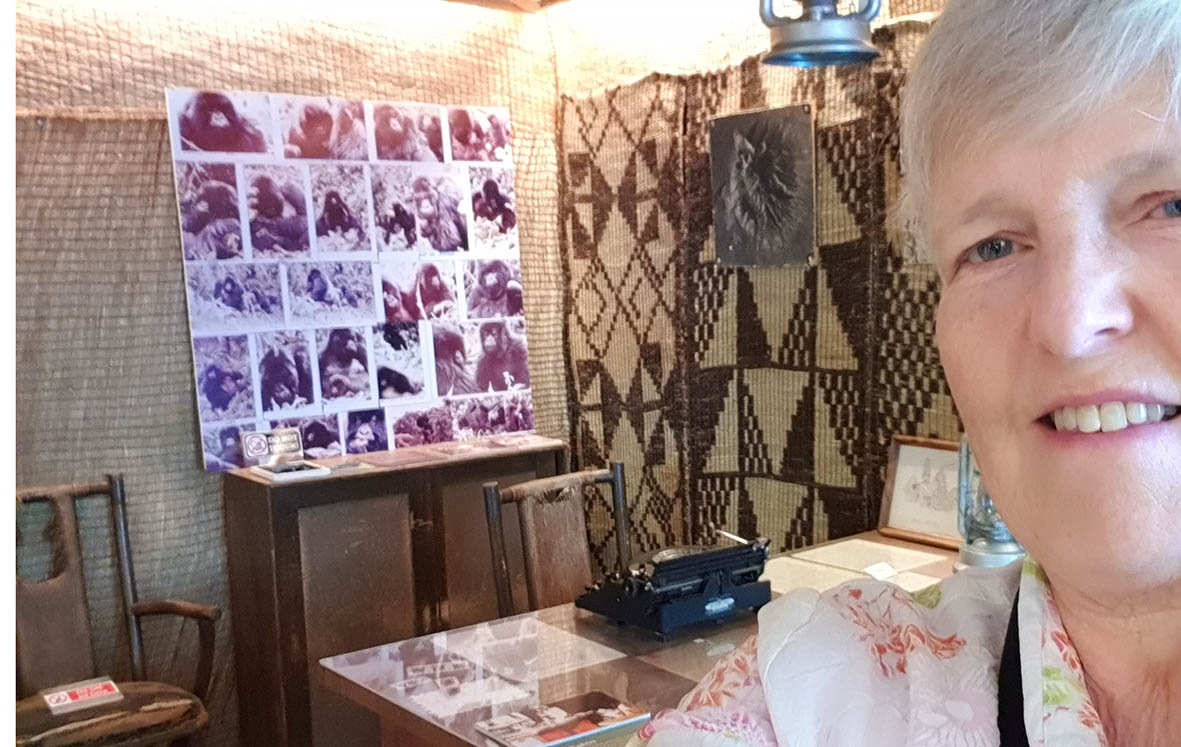
In addition to her research, Fossey was a fierce advocate for gorilla conservation and worked tirelessly to raise awareness about the threats facing the species. She exposed the illegal poaching and smuggling of gorillas, leading to the arrest and conviction of several poachers. She also founded the Karisoke Research Center, a research station in Rwanda’s Virunga Mountains that continues to be a major centre for gorilla research and conservation today.
Fossey’s work had a significant impact on gorilla conservation and led to the creation of several national parks and protected areas in the region. She also inspired a generation of conservationists and researchers, many of whom continue to carry on her legacy today.
Sadly, Fossey was murdered in 1985, likely by poachers she had been fighting against for years. However, her work lives on, and she remains an inspiration to those who seek to protect and conserve endangered species around the world.
Gorilla conservation in Rwanda
Conservation efforts in Volcanoes National Park in Rwanda have been focused primarily on the protection of the park’s critically endangered mountain gorilla population. The park, which covers an area of over 160 square kilometers, is home to around one third of the world’s remaining mountain gorillas, and is one of the key sites for their conservation.
Efforts to protect the gorillas and their habitat in the park have been ongoing for several decades. These efforts have been led by a number of different organizations, including the Rwandan government, the International Gorilla Conservation Programme (IGCP), and the Dian Fossey Gorilla Fund International.
One of the key conservation strategies in the park has been the establishment of gorilla tracking tours, which allow visitors to observe the gorillas in their natural habitat. The revenue generated by these tours is used to fund conservation efforts in the park, including anti-poaching patrols and habitat restoration projects.
In addition to gorilla conservation, efforts have also been made to protect other species in the park, such as the golden monkey and the forest elephant. Park rangers conduct regular patrols to monitor for illegal hunting, logging, and other activities that could harm the park’s wildlife and ecosystems.
Community involvement has also been an important part of conservation efforts in the park. Local communities are involved in the management of the park, and programs have been established to provide education and training on conservation issues, as well as to promote sustainable livelihoods that are compatible with conservation goals.
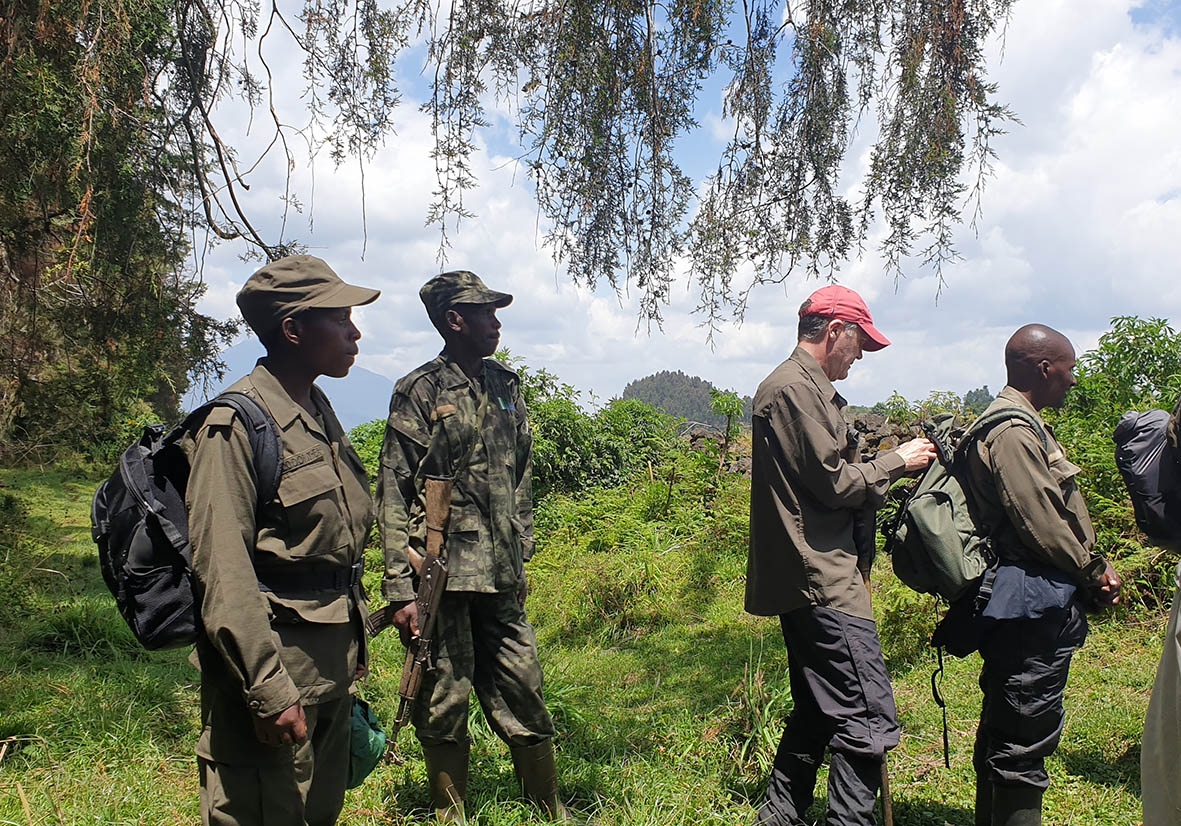
Overall, the conservation efforts in Volcanoes National Park have been successful in stabilizing the mountain gorilla population and protecting their habitat. While there are still challenges to be faced, such as poaching and habitat loss, the continued support of the government, local communities, and conservation organizations will be critical to ensuring the long-term survival of the park’s wildlife and ecosystems.
All about Rwanda
Rwanda is a landlocked country in East Africa, known for its stunning natural beauty and diverse wildlife. The country has a complex and often tragic history, which has had a significant impact on its conservation efforts.
Prior to colonization by European powers in the late 19th century, Rwanda was ruled by a monarchy. However, following colonization, the country was divided along ethnic lines, with the majority Hutu population pitted against the minority Tutsi population. This division led to decades of conflict and violence, culminating in the 1994 genocide in which an estimated 800,000 people were killed in just 100 days.
In the aftermath of the genocide, the Rwandan social structure was decimated and the government launched a number of initiatives aimed at rebuilding the country and promoting sustainable development. One of the key priorities was conservation, which was seen as critical to the country’s long-term economic and social development.
Today, Rwanda is home to three national parks: Volcanoes National Park, Akagera National Park, and Nyungwe Forest National Park. These parks are home to a wide range of wildlife species, including mountain gorillas, chimpanzees, elephants, and a variety of bird species.
Overall, while Rwanda’s history has been marked by conflict and tragedy, the country has made significant progress in recent years in promoting sustainable development and wildlife conservation. Through continued investment in conservation initiatives, Rwanda can build a brighter future for both its people and its unique wildlife species.
5 more things you should know about Rwanda
- Rwanda is known as the “Land of a Thousand Hills” due to its undulating terrain and lush landscapes.
- Rwanda is the most densely populated country in Africa, with an estimated 504 people per km2. It is just a bit bigger than Wales.
- In 2008, Rwanda became the first country in the world to ban plastic bags.
- Rwandan coffee, grown in the mountains, is known for its high quality and has won numerous awards in international competitions
- Rwanda has one of the highest percentages of women in parliament in the world, with women holding over 60% of seats in the lower house.
And finally…
Seeing a mountain gorilla in the wild was an experience I will never forget, and I left the jungle feeling humbled, inspired, and grateful for the opportunity to witness such a rare and beautiful sight.
